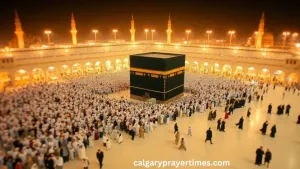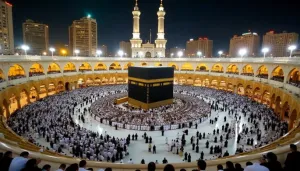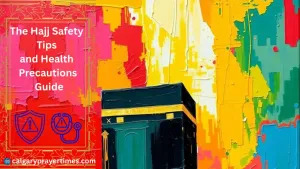Eid Ul Adha Celebration of Faith and Togetherness
Eid Ul Adha celebration of faith and togetherness sometimes called the Festival of Sacrifice, is like the Super Bowl of Islamic holidays. It’s nicknamed the “Greater Eid” because it carries such a big spiritual punch. It happens on the 10th day of Dhu al-Hijjah, the last month of the Islamic calendar, which follows the moon. That’s why the date shifts each year—pretty cool, huh? In 2025, it’s likely to kick off around June 6 and last four days.
This festival celebrates a powerful story of faith involving Prophet Ibrahim. It’s also a time for Muslims to pray together, share meals, and help those who don’t have as much. Oh, and it wraps up the Hajj, the wonderful pilgrimage to Mecca that’s a dream trip for many Muslims.
The Story of Prophet Ibrahim
Let’s discuss the heart of Eid Ul Adha: the story of Prophet Ibrahim, or Abraham, as he’s known in Christianity and Judaism. This person was the ultimate example of trusting God. Picture this: God asked Ibrahim to do something incredibly tough—sacrifice his son, Isma’il. I can’t even imagine how heavy that must’ve felt! But Ibrahim loved and trusted God so much that he was ready to follow through.
Right at the last second, God sent a ram to take Isma’il’s place. Phew! It indicated that God was testing Ibrahim’s faith, not asking for his son’s life. This story is all about trust, sacrifice, and caring for others. During Eid Ul Adha, Muslims honor the occasion by performing Qurbani, sacrificing an animal like a sheep or goat. Three groups divide the meat: the family, friends, and the poor. It’s a reminder to share and spread kindness.


How Do People Celebrate Eid Ul Adha
Eid Ul Adha is a blast! It’s packed with traditions that bring everyone closer. Here’s the rundown:
Morning Prayers: The day starts with Salat al-Eid, a special prayer at the mosque or an open field. Everyone puts on their best outfits—think bright colors and sparkly accessories—to show respect. It’s like dressing up for a big family party, and the prayers are a way to say thanks to God.
Qurbani Time: Families who can afford it sacrifice an animal, like a goat or cow, to remember Ibrahim’s faith. Everyone, especially those in need, receives a share of the meat. It’s not just about the act—it’s about giving back.
After Qurbani, families enjoy feasting and fun! Families whip up delicious dishes like spicy kebabs, fluffy biryani, and sweet treats like sheer khurma. I still dream about my aunt’s homemade samosas from last Eid! Friends and relatives come over, and the house buzzes with laughter.
Helping Others: Charity is huge during Eid Ul Adha. People donate food or money to make sure everyone can join the celebration. It’s all about spreading love and making sure no one’s left out.
Visiting and Gifts: Folks visit each other’s homes, saying “Eid Mubarak” (Happy Eid!) and swapping hugs. Kids get super excited for Eidi—cash or gifts from elders. It’s like Christmas morning, but with more glittery envelopes!
These traditions make Eid Ul Adha a time of warmth and connection, like a big community hug.
The Link to Hajj
Eid Ul Adha isn’t just a standalone party—it’s tied to Hajj, the pilgrimage to Mecca in Saudi Arabia. Hajj is one of the Five Pillars of Islam, a must-do for Muslims who are able. Pilgrims do things like circling the Ka’bah and praying at Mount Arafat. On the last day, they perform a sacrifice, which lines up with Eid Ul Adha celebrations everywhere else.
Even if you’re not in Mecca, you’re part of the same global moment. It’s like everyone’s connected, praying and celebrating together, no matter where they are. Pretty amazing, right

Different Flavors of Eid Ul Adha
While the core of Eid Ul Adha is the same worldwide, every place adds its own spice. In Pakistan, you’ll see hands decorated with intricate henna designs, and kids counting their Eidi like little accountants. In Saudi Arabia, Mecca is buzzing with pilgrims, and the energy is electric. African countries might throw in traditional dances or unique dishes, while in Western countries, Muslims often gather in parks for prayers and potlucks. It’s like a global festival with local twists, blending faith with culture.

FAQs about Eid Ul Adha
Conclusion
Eid Ul Adha is so much more than a holiday—it’s a chance to grow closer to God, family, and community. Through prayers, Qurbani, and shared feasts, Muslims celebrate Prophet Ibrahim’s incredible faith. Whether it’s giving to the poor or swapping Eidi with cousins, every moment is about love and generosity. Next time you hear about Eid Ul Adha, think about its lessons: trust, sharing, and kindness. They’re ideas that can make us all better people.





